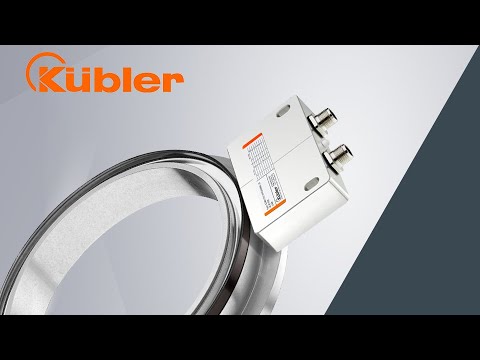Kübler Group - Fritz Kübler GmbH
- Manufacturer
- Germany
- Website
- Send product inquiry
- Phone
Kübler Group - Fritz Kübler GmbH
- Manufacturer
- Germany
- Website
- Send product inquiry
- Phone
- DIN EN ISO 9001:2015
- Reach
- RoHS

Kübler Group - Fritz Kübler GmbH
- Manufacturer
- Germany
- Website
- Send product inquiry
- Phone
- DIN EN ISO 9001:2015
- Reach
- RoHS
Bearingless encoders by Kübler Group - Fritz Kübler GmbH
Bearingless encoders are the perfect alternative to bearing mounted encoders, due to their compact design and easy mounting options on almost any shaft diameter. Bearingless encoders from Kübler are already used today in drive and elevator technology, for asynchronous motors or external rotor motors, or in generators, large motors, and wind turbines. Our smart technology is available for the highest signal quality. Digital real-time signal processing compensates for possible signal errors and optimizes drive control. Design your plants, machines, or motors with Kübler!
Incremental bearingless encoders
Ideal for accurate speed measuring with a resolution of up to 16,000 pulses per revolution and available in HTL or TTL versions. Simple, quick installation thanks to various shaft mounting options such as pressure seat, hub screw, or screw flange. Large mounting tolerance between magnetic ring and sensor head.Absolute bearingless encoders
Ideal for precise position or angle acquisition with a resolution of up to 16,000 measuring steps per revolution and available in SSI or CANopen versions. Additional incremental signals for highly dynamic drives. Due to the absolute measuring principle, the design of the sensor head is adapted to the radius of the magnetic ring. Standard shaft diameter of 30 mm. Is this diameter insufficient for your application? No problem. Please contact us.
For larger quantities, we can implement your custom bearingless encoder solution.
More Products in the Area of Rotary encoders
Bearingless rotary encoders (RIM500)
High flexibility and performance with cost savings.
With a new technology approach based on digital signal processing independent of previous ASIC solutions, Kübler has expan...





